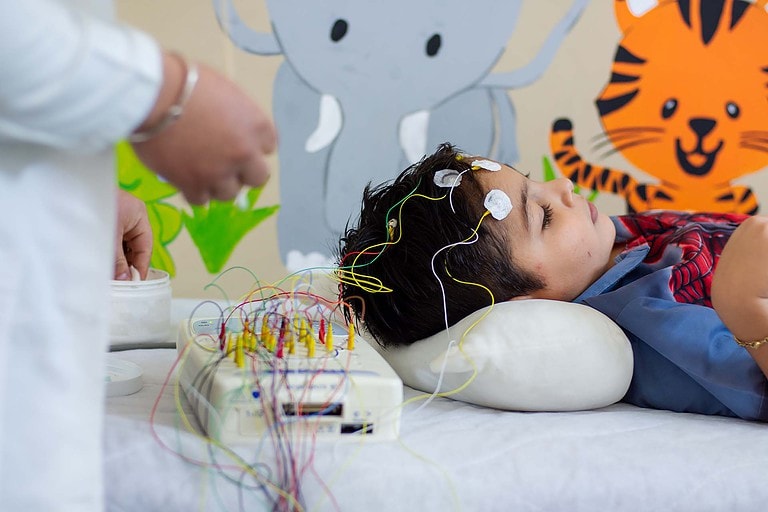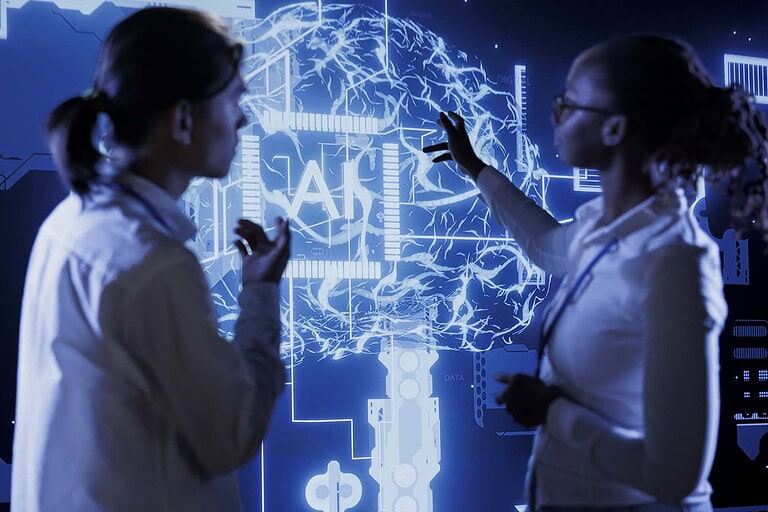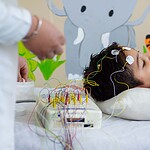This article explores how the brain manages action regulation, with a particular focus on prefrontal cortex functions and current research findings. We examine the neurobiological mechanisms that enable us to plan, prioritise, and execute goal-directed actions in everyday life. From the role of key brain regions to the influence of chemical messengers, this piece provides insights into the fascinating world of cognitive control. Understanding these processes helps explain not only how we navigate complex tasks but also what happens when control systems don’t function optimally.
Table of Contents
The Brain’s Command Centre
At the heart of our brain’s control system lies a sophisticated network of interconnected regions, with the prefrontal cortex serving as the primary orchestrator. This area, located just behind the forehead, has evolved considerably in humans and distinguishes us from other species in our capacity for complex planning and behavioural regulation. The prefrontal cortex doesn’t work in isolation, however. Research in neuropsychology has revealed that effective action control depends on the seamless integration of multiple brain regions working together.
The basal ganglia, deep structures within the brain affected in neurological disorders such as Parkinson’sDisease, form a crucial partnership with the prefrontal cortex in facilitating decision-making processes. These subcortical structures help filter competing action plans and enable the selection of appropriate responses whilst suppressing less relevant alternatives. The parietal cortex contributes by processing sensory information and translating it into motor commands. When we reach for a cup of coffee, for instance, this intricate network calculates the distance, adjusts our grip strength, and monitors the movement’s progress—all within fractions of a second.
Why Prefrontal Cortex Functions Matter
The various functions of the prefrontal cortex extend far beyond simple movement control. This region enables us to hold information temporarily in working memory, switch flexibly between different tasks, and inhibit inappropriate impulses. It’s the reason we can remember a phone number long enough to dial it, resist checking social media during work, or adjust our dinner plans when unexpected guests arrive. Damage to this area can profoundly impair these abilities, demonstrating just how crucial prefrontal cortex functions are for navigating daily life successfully.
How Actions Actually Happen
Understanding how we move from intention to execution reveals fascinating insights into our neural machinery. Decision-making in the brain unfolds through several distinct yet overlapping stages that happen remarkably quickly, often without conscious awareness.
The Four Stages of Action
- Information gathering: Sensory systems collect data from our environment, whilst memory systems retrieve relevant experiences that might inform our choices
- Evaluation: The prefrontal regions weigh different options against our current goals, potential outcomes, and emotional significance
- Selection: Competing action plans are compared, and the most appropriate response is chosen based on contextual demands
- Execution: Motor systems implement the selected action, whilst monitoring systems ensure the movement proceeds as planned
This process occurs continuously throughout our waking hours. When circumstances demand rapid responses, our brain can shortcut some stages, relying on well-practised patterns stored in procedural memory. However, novel or complex situations require more extensive prefrontal involvement, which is why unfamiliar tasks feel mentally taxing and sometimes overwhelming.
The Chemistry of Control
The brain’s communication relies heavily on chemical messengers called neurotransmitters, which profoundly influence our capacity for cognitive control. These molecules essentially determine how efficiently different brain regions can coordinate their activities.
Dopamine, perhaps the most studied neurotransmitter in action control neuropsychology, plays a vital role in motivation, reward processing, and action selection. This neurotransmitter helps signal which behaviours lead to positive outcomes, effectively teaching the brain through experience. Research has demonstrated that disruptions in dopamine signalling can significantly impair action control in the brain and action regulation. Conditions such as Parkinson’s disease, characterised by dopamine depletion, illustrate how deficits in this system compromise motor control and cognitive flexibility.
GABA (gamma-amino butyric acid), the brain’s primary inhibitory neurotransmitter, serves an equally important function by preventing unwanted neural activity. This inhibition is essential for filtering distractions and suppressing inappropriate responses. The delicate balance between excitatory and inhibitory signals determines how effectively we can concentrate on relevant information whilst ignoring irrelevant stimuli. Too much inhibition leads to sluggish responses, whilst too little results in impulsivity and distractibility.
What Current Research Reveals
Modern neuroscience has made remarkable progress in understanding the mechanisms underlying cognitive control, largely through advances in brain imaging and electrophysiological recording techniques. Functional MRI studies have mapped the specific regions that activate during different types of mental tasks, revealing that even seemingly simple actions engage surprisingly extensive neural networks. EEG recordings, which measure electrical brain activity with millisecond precision, have uncovered the temporal dynamics of how information flows between different cortical areas during decision-making processes.
Recent investigations have also highlighted the importance of neural oscillations—rhythmic patterns of brain activity—in coordinating cognitive control. Theta waves in frontal regions, for example, appear particularly relevant for detecting conflicts between competing response options and signalling the need for increased attentional control. These oscillatory patterns serve as a kind of neural communication system, synchronising activity across distant brain regions to facilitate coordinated information processing.
Contemporary research combining clinical observations with experimental neuroscience has revealed how subtle variations in neurochemical systems influence our capacity for goal-directed behaviour and action control neuropsychology. Studies examining the interplay between prefrontal and basal ganglia circuits have advanced our understanding of how the brain integrates sensory information with motor commands.
Real-World Applications
Understanding the neurobiology of cognitive control extends beyond academic interest, offering practical applications for addressing various clinical conditions. Attention deficit hyperactivity disorder (ADHD), characterised by difficulties sustaining attention and inhibiting impulses, reflects disruptions in the prefrontal control networks. Similarly, obsessive-compulsive disorder involves exaggerated cognitive control that prevents individuals from flexibly disengaging from intrusive thoughts.
Therapeutic strategies increasingly incorporate this neurobiological knowledge. Dr. Christian Beste’s research at TU Dresden has contributed valuable insights into how prefrontal and basal ganglia circuits coordinate to enable goal-directed behaviour. Cognitive training programmes aim to strengthen prefrontal function through repeated practice of attention-demanding tasks. Neurofeedback techniques teach individuals to voluntarily modulate their brain activity patterns, potentially enhancing self-regulation abilities. Pharmacological interventions target specific neurotransmitter systems to normalise disrupted neural signalling. These approaches represent just the beginning of what’s possible when we apply our understanding of brain function to real-world challenges.
The field continues to evolve as researchers develop increasingly sophisticated methods for studying brain function. Computational models now simulate how neural networks might process information and generate behaviour, providing testable predictions about cognitive control mechanisms. Research groups such as Christian Beste’s have pioneered approaches that bridge clinical and basic neuroscience, ensuring that theoretical advances translate into improved diagnostic and therapeutic strategies.
Looking ahead, personalised approaches to enhancing cognitive control may become possible as we better understand individual variations in brain structure and function. Recognising that people differ substantially in their neural organisation suggests that interventions should be tailored to each person’s unique neurobiological profile rather than applying one-size-fits-all solutions. This emerging field of precision cognitive neuroscience holds considerable promise for optimising human performance and treating disorders more effectively.







